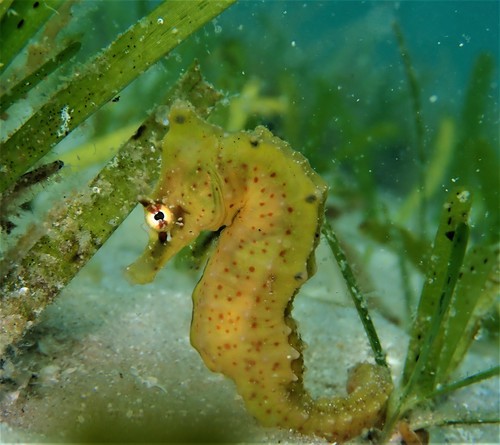Protecting Giraffes - Giraffe seahorses that is - in Mozambique
By Ebba Hooft-Toomey

This proud Giraffe seahorse (Hippocampus camelopardalis) was observed in Mozambique by Dr. Louw Claassens (IUCN Seahorse, Pipefish and Seadragon Specialist Group Member), who then uploaded it here. While not much is known about Giraffe seahorses - they are classified as Data Deficient on the IUCN Red List - we do know they are found in the coastal waters of southern and eastern Africa. As seen in this photo, Giraffe seahorses live in estuarine seagrass beds, as well as algal beds and shallow reefs.
The grassroots organization ParCo recently investigated the fishing of seahorses in Mozambique. They found that the majority of seahorses are extracted for the Chinese Traditional Medicine trade, a common use of seahorses from around the world. However, fishing in Mozambique has a unique twist; many fishers use mosquito nets, which have a very fine mesh, to catch aquatic life.
Due to concerns about the seahorse trade, ParCo reached out to Project Seahorse for guidance a few years ago. Now ParCo has developed an inspiring seahorse protection program that focuses on four main agents of conservation in the region: research, education, enforcement, and tourism. First, with the help of Dr. Claassens, they set up a seahorse monitoring program in 2019 which continues to research and survey seahorse population in the area. Second, local fishers who are concerned about conservation help enforce rules by monitoring their peers. Finally, partnership with the Bahia Mar Hotel helps promote seahorse tourism as an alternate source of income for fishermen. The well-rounded approach of ParCo, founded on the idea of helping local communities “realize their vision for change” is a promising example of marine conservation in action.
For more information:
Hippocampus camelopardalis IUCN Red List listing: https://www.iucnredlist.org/species/10064/100939136
Dr. Louw Claassens (IUCN Seahorse, Pipefish and Seadragon Specialist Group Member)
